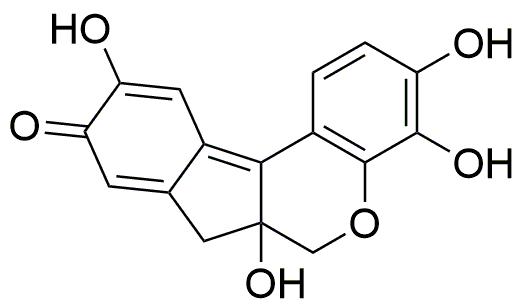Hematein is widely utilized in research focused on:
- Histological Staining: Hematein is primarily used as a dye in histology to stain tissue samples. Its ability to bind to cellular components makes it invaluable for visualizing structures under a microscope.
- Pathology: In pathology labs, hematein is employed to enhance the contrast of tissue sections, aiding in the diagnosis of diseases by allowing clearer observation of cellular morphology.
- Educational Purposes: Hematein is often used in educational settings for teaching histology and microscopy techniques, providing students with hands-on experience in tissue analysis.
- Research in Cell Biology: Researchers utilize hematein to study cellular processes and structures, facilitating advancements in understanding cell function and disease mechanisms.
- Comparative Studies: Hematein is advantageous in comparative studies of different staining methods, offering researchers insights into the effectiveness and specificity of various histological techniques.
General Information
Properties
Safety and Regulations
Applications
Hematein is widely utilized in research focused on:
- Histological Staining: Hematein is primarily used as a dye in histology to stain tissue samples. Its ability to bind to cellular components makes it invaluable for visualizing structures under a microscope.
- Pathology: In pathology labs, hematein is employed to enhance the contrast of tissue sections, aiding in the diagnosis of diseases by allowing clearer observation of cellular morphology.
- Educational Purposes: Hematein is often used in educational settings for teaching histology and microscopy techniques, providing students with hands-on experience in tissue analysis.
- Research in Cell Biology: Researchers utilize hematein to study cellular processes and structures, facilitating advancements in understanding cell function and disease mechanisms.
- Comparative Studies: Hematein is advantageous in comparative studies of different staining methods, offering researchers insights into the effectiveness and specificity of various histological techniques.
Documents
Safety Data Sheets (SDS)
The SDS provides comprehensive safety information on handling, storage, and disposal of the product.
Product Specification (PS)
The PS provides a comprehensive breakdown of the product’s properties, including chemical composition, physical state, purity, and storage requirements. It also details acceptable quality ranges and the product's intended applications.
Certificates of Analysis (COA)
Search for Certificates of Analysis (COA) by entering the products Lot Number. Lot and Batch Numbers can be found on a product’s label following the words ‘Lot’ or ‘Batch’.
*Catalog Number
*Lot Number
Certificates Of Origin (COO)
This COO confirms the country where the product was manufactured, and also details the materials and components used in it and whether it is derived from natural, synthetic, or other specific sources. This certificate may be required for customs, trade, and regulatory compliance.
*Catalog Number
*Lot Number
Safety Data Sheets (SDS)
The SDS provides comprehensive safety information on handling, storage, and disposal of the product.
DownloadProduct Specification (PS)
The PS provides a comprehensive breakdown of the product’s properties, including chemical composition, physical state, purity, and storage requirements. It also details acceptable quality ranges and the product's intended applications.
DownloadCertificates of Analysis (COA)
Search for Certificates of Analysis (COA) by entering the products Lot Number. Lot and Batch Numbers can be found on a product’s label following the words ‘Lot’ or ‘Batch’.
*Catalog Number
*Lot Number
Certificates Of Origin (COO)
This COO confirms the country where the product was manufactured, and also details the materials and components used in it and whether it is derived from natural, synthetic, or other specific sources. This certificate may be required for customs, trade, and regulatory compliance.


